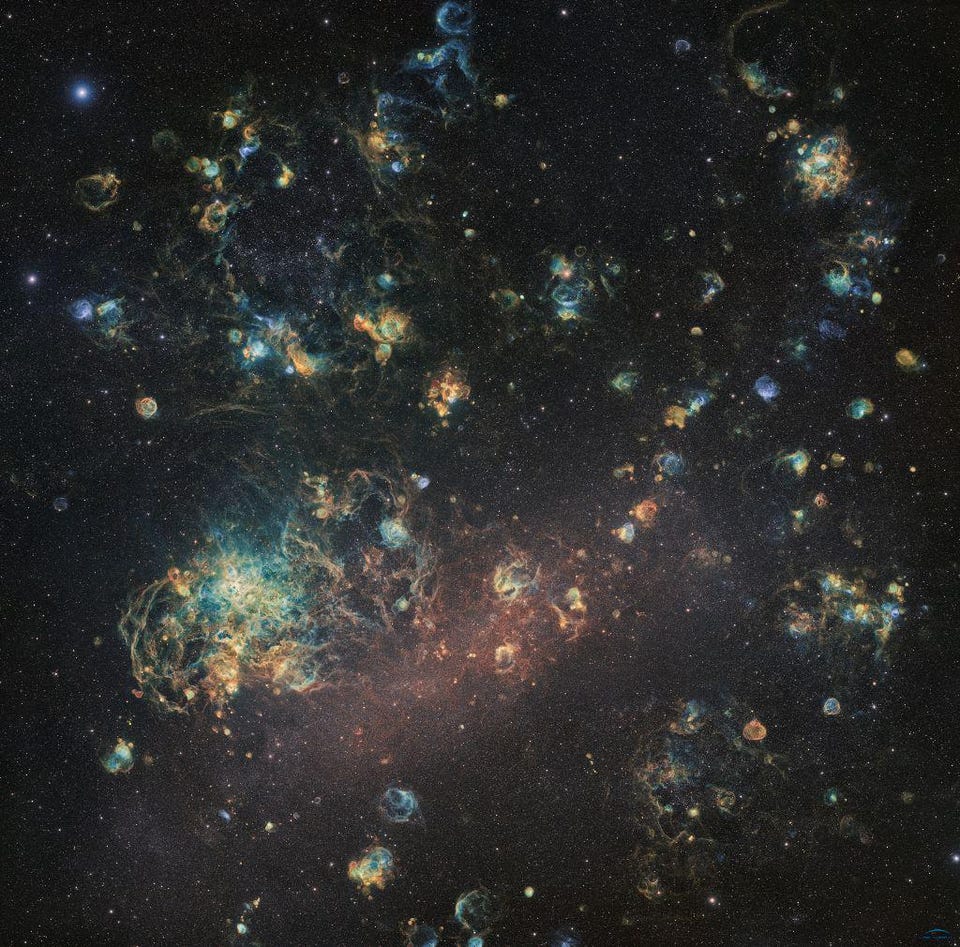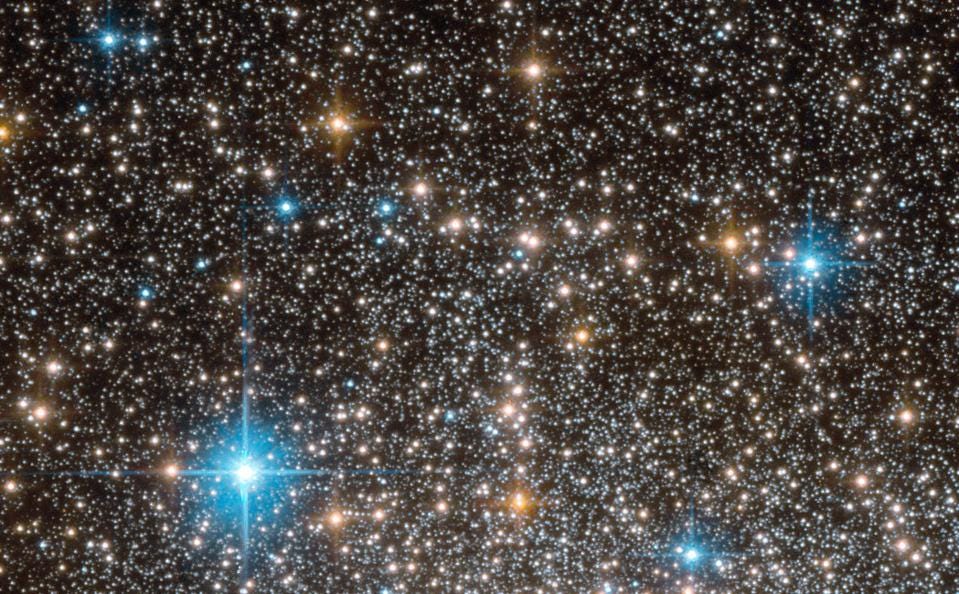Mostly Mute Monday: The Butterfly Nebula
The death throes of a Sun-like star announce its funeral to the whole galaxy.
“The butterfly counts not months but moments, and has time enough.”
–Rabindranath Tagore

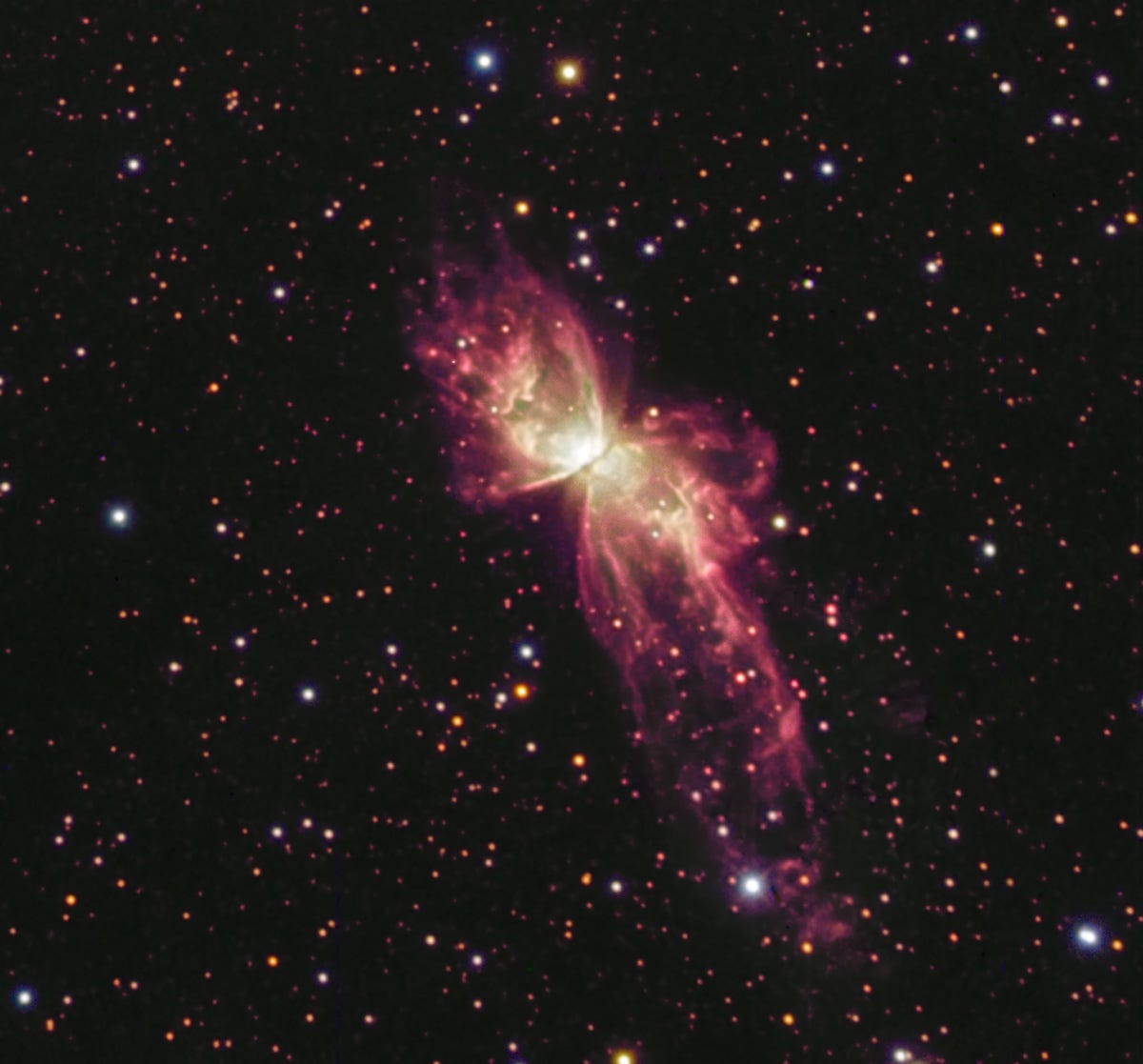
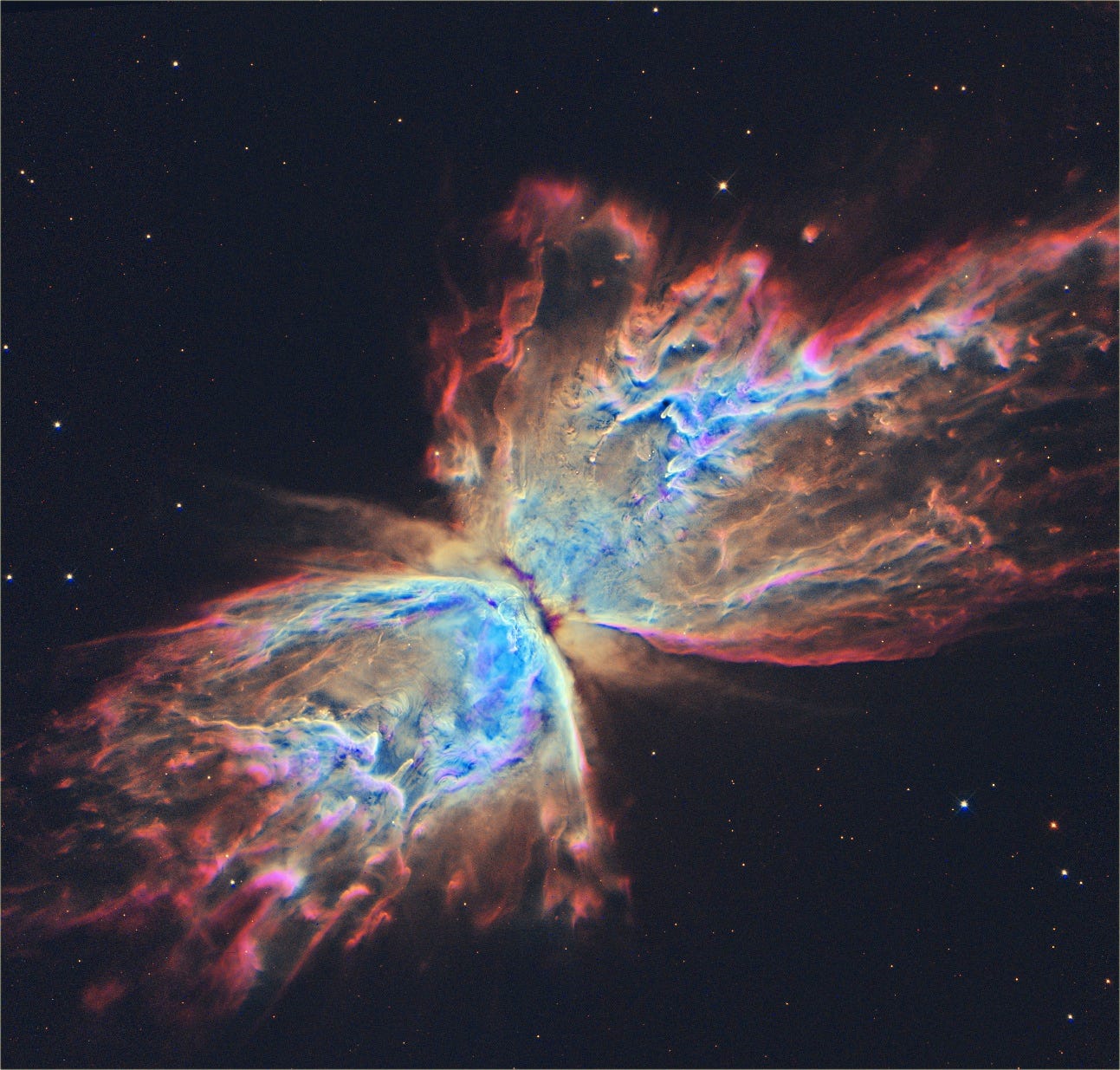
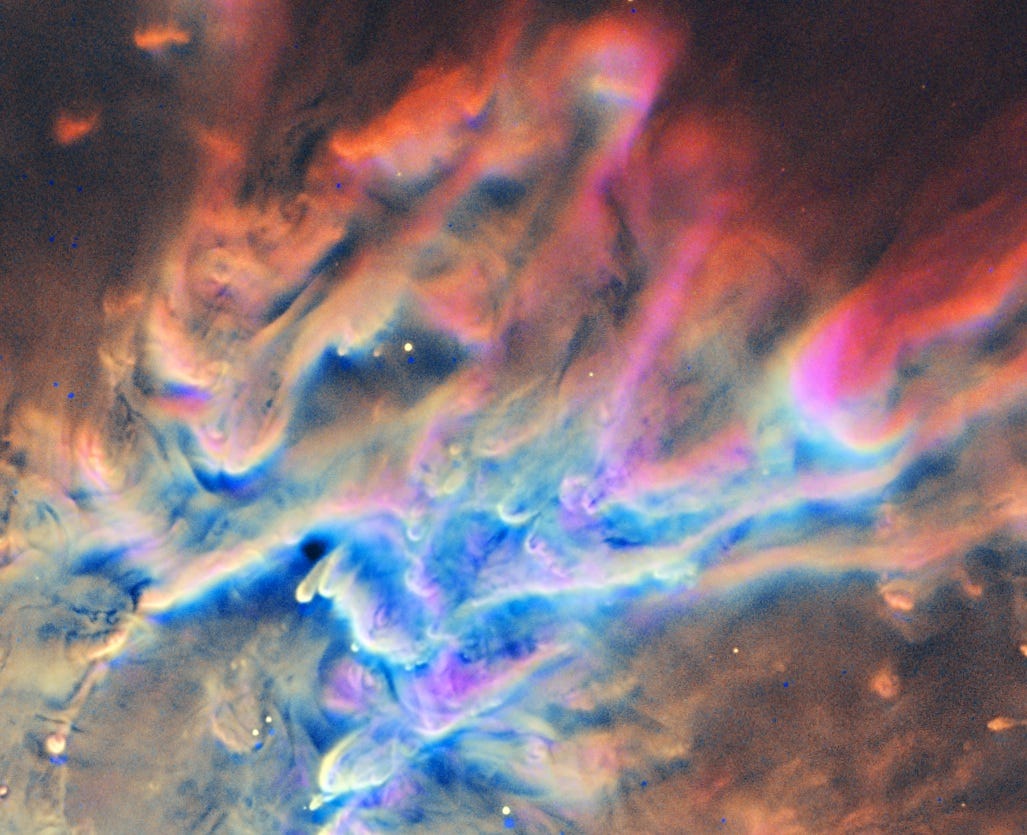
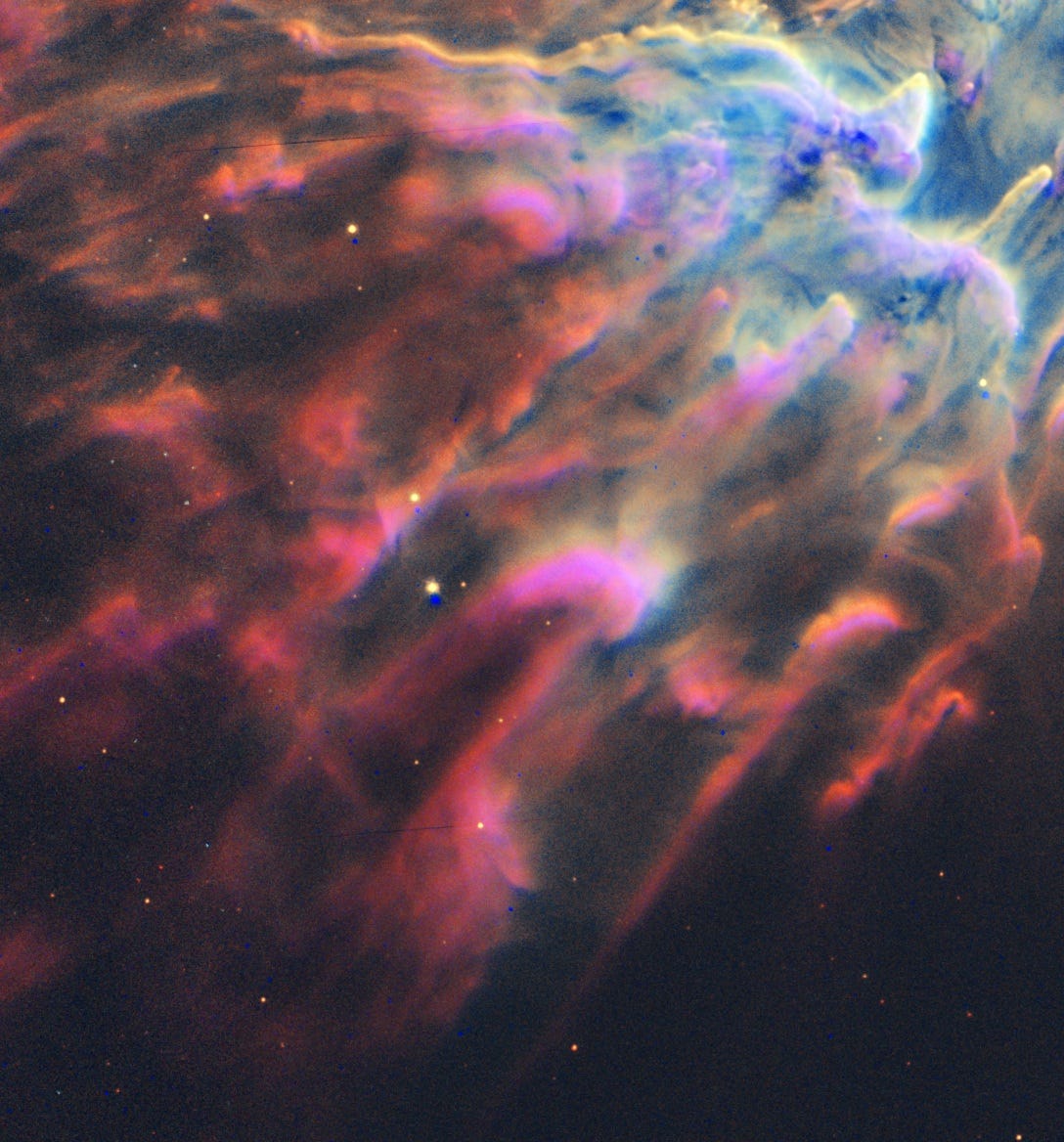

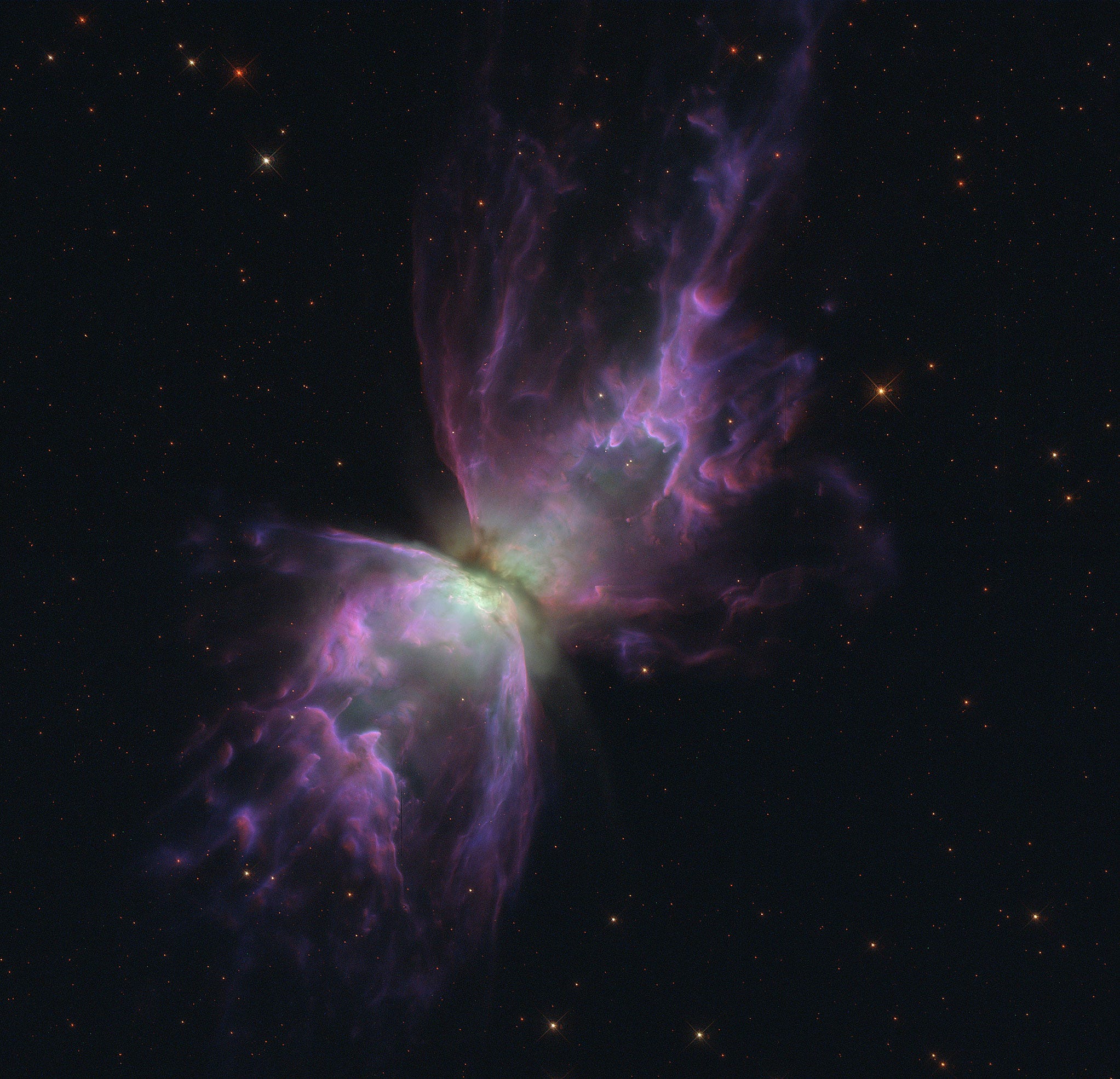
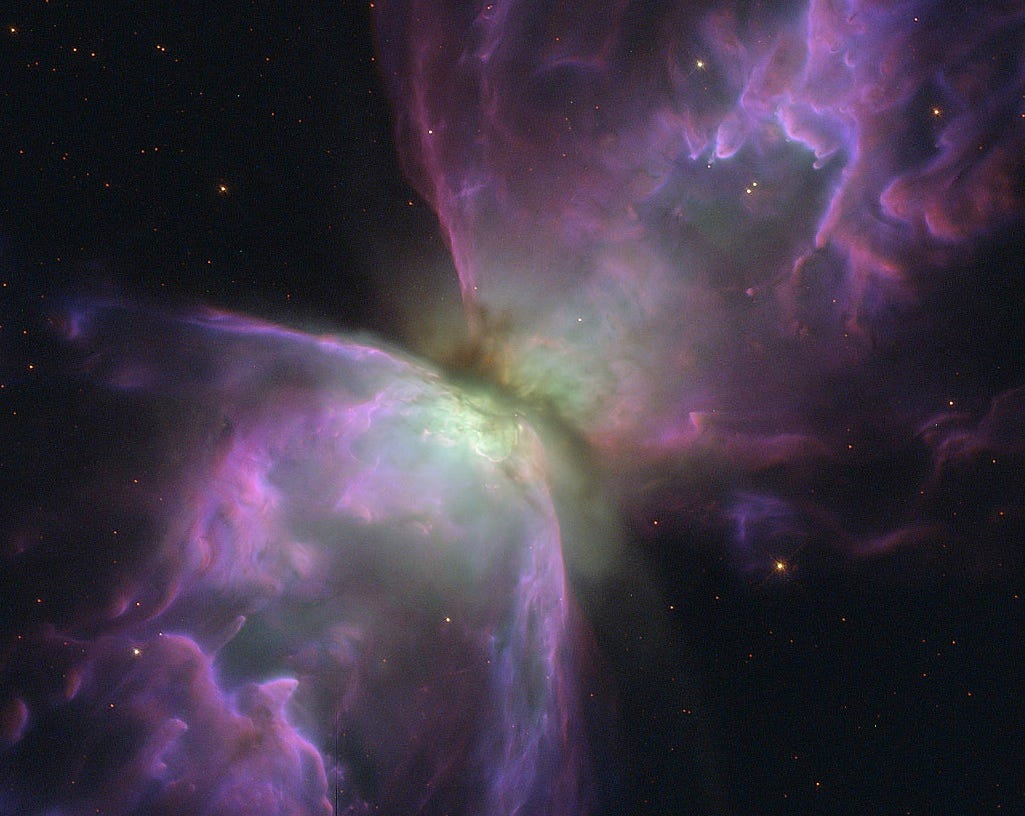
Some 3,400 light years away, a star not so different from our Sun recently reached the end of its life, having burned through all the hydrogen and helium fuel in its core. After expanding to become a red giant, the star that would become the Butterfly Nebula did something uncommon: after it began blowing off its outermost (mostly hydrogen) layers, helium fusion reignited in its core, placing it into a special class of pre-degenerate stars.
We can tell this history by examining the various elements and molecules found in the planetary nebula, as well as where they’re located. In addition to nitrogen, sulfur, hydrogen and helium, we find polycyclic aromatic hyrdrocarbons (PAHs) along with oxygen-rich material like silicates as co-located dust. Hydrocarbons forming in an oxygen-rich environment, coupled with the observed ionization walls, knots and sharp edges, inform us of this history.
At the nebula’s center, a 0.64 solar mass object radiates at 200,000 K, on its way to becoming a white dwarf and fading at a rate of 1%-per-year in brightness. The nebula is around three light years in diameter, is estimated at 1,900 years old, and expands at more than 600 km/s.

Mostly Mute Monday tells the story of a single astronomical phenomenon or object in visuals, images, video and no more than 200 words.
Leave your comments on our forum, and support Starts With A Bang on Patreon!


